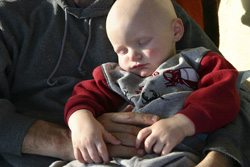Determining the right dose for child cancer patients
Research has been done before to determine the pharmacological action of drugs used in paediatric oncology. However, a wider, larger group of child patients is needed to really get enough information. An EU-funded project, ʹEuropean paediatric oncology off-patent medicines consortiumʹ (EPOC), is addressing the issue with the help of leading pharmacologists, paediatric oncologists and regulatory organisations. Doctors usually determine dosage based on studies done in adult patients. They lower the dose for safety, but often toxic effects will persist or the dose will be too low to destroy the tumour. In other words, a narrow window of effective therapy exists, which must be determined by characterising how the drug is absorbed and metabolised in children. This is known as the pharmacokinetics of the drug. By taking various child age groups into account, the research is set to greatly improve the treatment of paediatric cancer.



